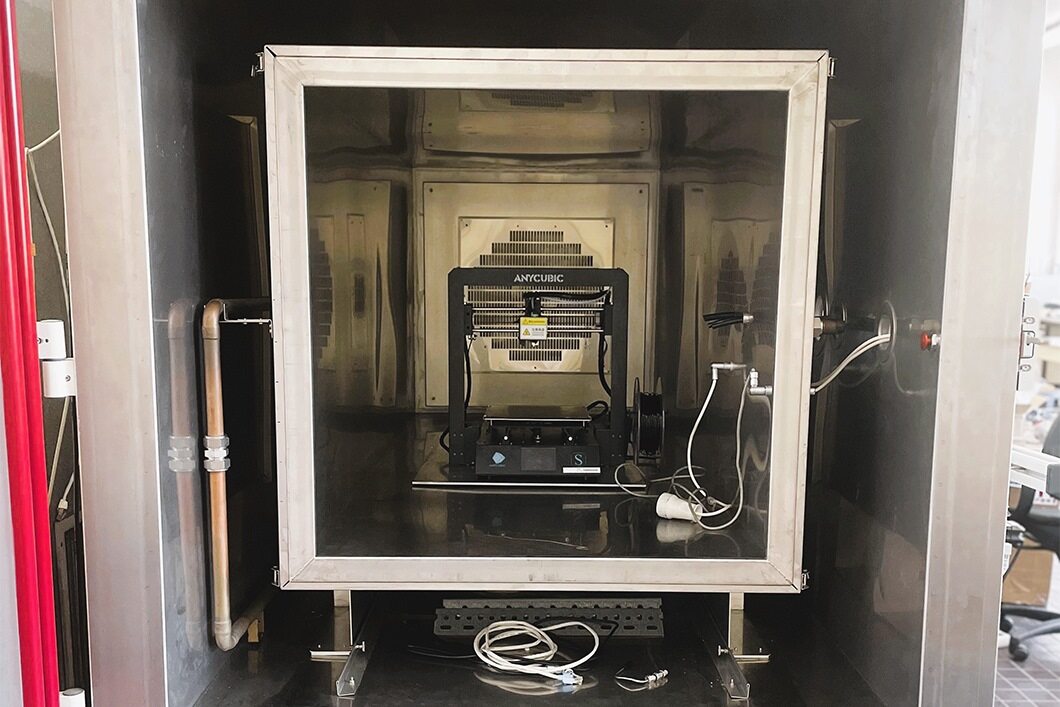
FFF-3D printer in an emission test chamber
Source: BAM, FB 4.5
3D printers are increasingly being used in professional applications, in education and training and in private households. Especially desktop 3D printers based on the fused filament fabrication (FFF) technology are popular among non-professional users due to the low purchase and material costs and easy handling. In FFF, plastic filaments are melted and extruded to print a predesigned 3D object layer by layer. A suitable extruder temperature is crucial for a successful 3D print, but at the same time temperature is a key emission driving factor for the release of harmful air pollutants (e.g., ultrafine particles) into indoor spaces by polymer evaporation and recondensation and by thermal degradation.
In recent years, an increasing number of emission studies was motivated by the presumption of potential health risks. Relevant air pollutants were found which gives cause to assume an exposure risk. Comparability of emission data is however lacking because in emission studies standardized conditions have mostly not been met. Progress has already been made in this respect by developing the ANSI/CAN/UL 2904 standard method or the DE-UZ 219 Blue Angel test method, which largely define experimental setups and assessment metrics.
The fact that very different printer models are investigated in emission studies is still a challenge because our infrared (IR) thermography and contact temperature measurements revealed that commercial FFF 3D printers show systematic deviations between set and actual temperature, and this has a significant impact on the particle emissions. Our study therefore suggests adjusting the extruder temperature prior to emission testing. We could show that an adjustment avoids systematic deviations and significantly improves the comparability of emission tests. Hence, this may lead to more reliable emission data for indoor air quality assessment or health risk evaluation.
Improving the comparability of FFF-3D printing emission data by adjustment of the set extruder temperature
Chi-Long Tang, Stefan Seeger, Mathias Röllig
published in: Atmospheric Environment: X, volume 18, first page 100217
BAM Department Analytical Chemistry; Reference Materials
BAM Division Process Analytical Technology
BAM Department Materials and the Environment
BAM Division Analysis of Artefacts and Cultural Assets
BAM Department Non-destructive Testing
BAM Division Thermographic Methods


